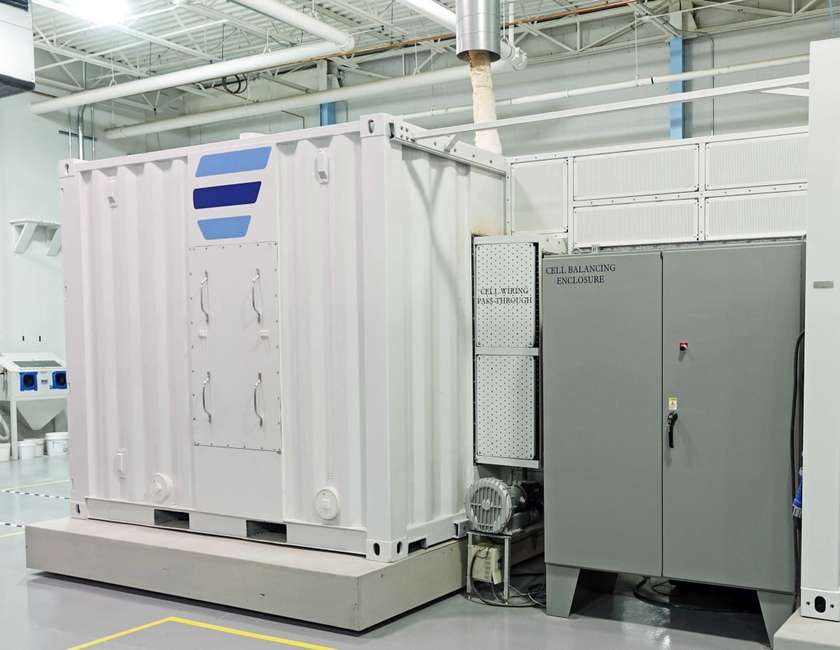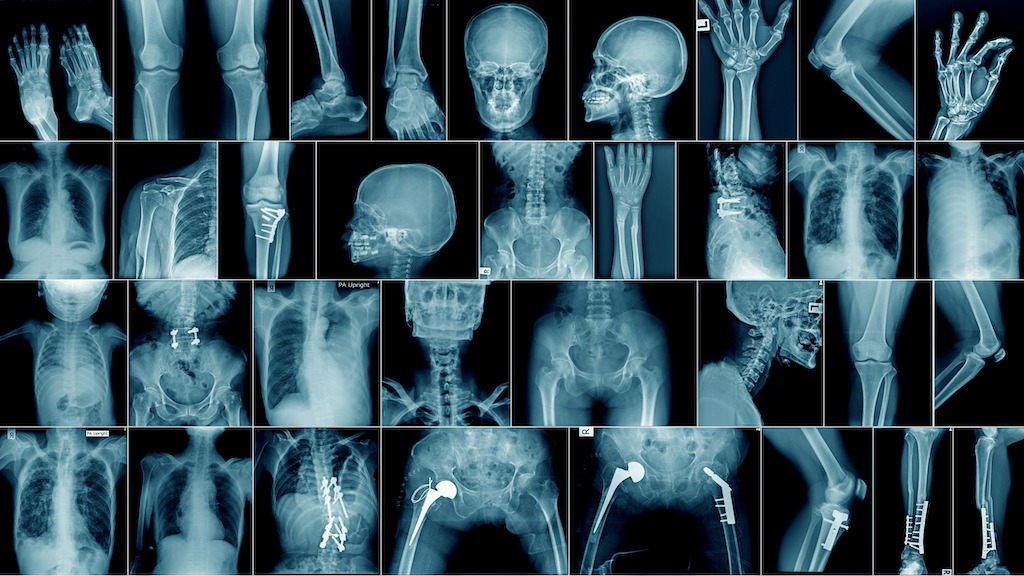As with yesterday's article on liquid-metal batteries this article speaks to how that approach was created. Prof. Donald Sadoway from MIT, A decade ago, the committee planning the new MIT Energy Initiative approached Donald Sadoway, MIT’s John F. Elliott Professor of Materials Chemistry, to take on the challenge of grid-scale energy storage. At the time, MIT research focused on the lithium-ion battery — then a relatively new technology. The lithium-ion batteries being developed were small, lightweight, and short-lived — not a problem for mobile devices, which are typically upgraded every few years, but an issue for grid use.
One of the basic question that Sadoway had an idea that turned to a process he knew well: aluminum smelting. Aluminum smelting is a huge-scale, inexpensive process conducted inside electrochemical cells that operate reliably over long periods and produce metal at very low cost while consuming large amounts of electrical energy. Sadoway thought: “Could we run the smelter in reverse so it gives back its electricity?”
Like a conventional battery, this one has top and bottom electrodes with an electrolyte between them. During discharging and recharging, positively charged metallic ions travel from one electrode to the other through the electrolyte, and electrons make the same trip through an external circuit. In most batteries, the electrodes — and sometimes the electrolyte — are solid according to the professor. This battery includes three metals. These metals are the negative electrode — the top layer in the battery — is a low-density liquid metal that readily donates electrons. The positive electrode — the bottom layer — is a high-density liquid metal that’s happy to accept those electrons. And the electrolyte — the middle layer — is a molten salt that transfers charged particles but won’t mix with the materials above or below. Because of the differences in density and the immiscibility of the three materials, they naturally settle into three distinct layers and remain separate as the battery operates.
Benefits of going liquid
"This novel approach provides a number of benefits. Because the components are liquid, the transfer of electrical charges and chemical constituents within each component and from one to another is ultrafast, permitting the rapid flow of large currents into and out of the battery. When the battery discharges, the top layer of molten metal gets thinner and the bottom one gets thicker. When it charges, the thicknesses reverse. There are no stresses involved, notes Sadoway. “The entire system is very pliable and just takes the shape of the container.” While solid electrodes are prone to cracking and other forms of mechanical failure over time, liquid electrodes do not degrade with use.
Indeed, every time the battery is charged, ions from the top metal that have been deposited into the bottom layer are returned to the top layer, purifying the electrolyte in the process. All three components are reconstituted. In addition, because the components naturally self-segregate, there’s no need for membranes or separators, which are subject to wear. The liquid battery should perform many charges and discharges without losing capacity or requiring maintenance or service. And the self-segregating nature of the liquid components could facilitate simpler, less-expensive manufacturing compared to conventional batteries."1
Sadoway and then-graduate student David Bradwell MEng ’06, PhD ’11 investigated methods exist for predicting how solid metals will behave under defined conditions. But those methods “were of no value to us because we wanted to model the liquid state,” says Sadoway — and nobody else was working in this area. So he had to draw on what he calls “informed intuition,” based on his experience working in electrometallurgy and teaching a large freshman chemistry class.
To keep costs down, the need to use electrode materials that were earth-abundant, inexpensive, and long-lived. To achieve high voltage, they had to pair a strong electron donor with a strong electron acceptor. The top electrode (the electron donor) had to be low density, and the bottom electrode (the electron acceptor) high density. “Mercifully,” says Sadoway, “the way the periodic table is laid out, the strong electropositive [donor] metals are low density, and the strong electronegative [acceptor] metals are high density”. And finally, all the materials had to be liquid at practical temperatures.
The first combination, Sadoway and Bradwell chose magnesium for the top electrode, antimony for the bottom electrode, and a salt mixture containing magnesium chloride for the electrolyte. They then built prototypes of their cell — and they worked. The three liquid components self-segregated, and the battery performed as they had predicted. Spurred by their success, in 2010 they, along with Luis Ortiz SB ’96, PhD ’00, also a former member of Sadoway’s research group, founded a company — called initially the Liquid Metal Battery Corporation and later Ambri — to continue developing and scaling up the novel technology.
Not there yet
As always there are problems with new approaches. To keep the components melted, the battery had to operate at 700 degrees Celsius (1,292 degrees Farenheit). Running that hot consumed some of the electrical output of the battery and increased the rate at which secondary components, such as the cell wall, would corrode and degrade. The search for alternate materials continue.
Early results from the magnesium and antimony cell chemistry had clearly demonstrated the viability of the liquid metal battery concept; as a result, the on-campus research effort received more than $11 million from funders including Total and the U.S. Department of Energy’s ARPA–E program.
"Within months, the team began to churn out new chemistry options based on various materials with lower melting points. For example, in place of the antimony, they used lead, tin, bismuth, and alloys of similar metals; and in place of the magnesium, they used sodium, lithium, and alloys of magnesium with such metals as calcium. The researchers soon realized that they were not just searching for a new battery chemistry. Instead, they had discovered a new battery “platform” from which a multitude of potentially commercially viable cell technologies with a range of attributes could spawn.
New cell chemistries began to show significant reductions in operating temperature. Cells of sodium and bismuth operated at 560 degrees Celsius. Lithium and bismuth cells operated at 550 C. And a battery with a negative electrode of lithium and a positive electrode of an antimony-lead alloy operated at 450 C.
While working with the last combination, the researchers stumbled on an unexpected electrochemical phenomenon: They found that they could maintain the high cell voltage of their original pure antimony electrode with the new antimony-lead version — even when they made the composition as much as 80 percent lead in order to lower the melting temperature by hundreds of degrees.
“To our pleasant surprise, adding more lead to the antimony didn’t decrease the voltage, and now we understand why,” Sadoway says. “When lithium enters into an alloy of antimony and lead, the lithium preferentially reacts with the antimony because it’s a tighter bond. So when the lithium [from the top electrode] enters the bottom electrode, it ignores the lead and bonds with the antimony.”
That unexpected finding reminded them how little was known in this new field of research — and also suggested new cell chemistries to explore. For example, they recently assembled a proof-of-concept cell using a positive electrode of a lead-bismuth alloy, a negative electrode of sodium metal, and a novel electrolyte of a mixed hydroxide-halide. The cell operated at just 270 C — more than 400 C lower than the initial magnesium-antimony battery while maintaining the same novel cell design of three naturally separating liquid layers."
The role of the new technology
But for grid-scale storage, both capabilities are important — and the liquid metal battery can potentially do both. It can store a lot of energy (say, enough to last through a blackout) and deliver that energy quickly (for example, to meet demand instantly when a cloud passes in front of the sun). Unlike the lithium-ion battery, it should have a long lifetime; and unlike the lead-acid battery, it will not be degraded when being completely discharged. And while it now appears more expensive than pumped hydropower, the battery has no limitation on where it can be used. With pumped hydro, water is pumped uphill to a reservoir and then released through a turbine to generate power when it’s needed. Installations therefore require both a hillside and a source of water. The liquid metal battery can be installed essentially anywhere. No need for a hill or water.
Bringing it to market
Ambri has now designed and built a manufacturing plant for the liquid metal battery in Marlborough, Massachusetts. As expected, manufacturing is straightforward: Just add the electrode metals plus the electrolyte salt to a steel container and heat the can to the specified operating temperature. The materials melt into neat liquid layers to form the electrodes and electrolyte. The cell manufacturing process has been developed and implemented and will undergo continuous improvement.
According to Bradwell, Ambri scientists and engineers have built more than 2,500 liquid metal battery cells and have achieved thousands of charge-discharge cycles with negligible reduction in the amount of energy stored. Those demonstrations confirm Sadoway and Bradwell’s initial thesis that an all-liquid battery would be poised to achieve better performance than solid-state alternatives and would be able to operate for decades.
Ambri researchers are now tackling one final engineering challenge: developing a low-cost, practical seal that will stop air from leaking into each individual cell, thus enabling years of high-temperature operation. Once the needed seals are developed and tested, battery production will begin.
Impacts
Due to the materials they are using one question that has not been addressed is how dangerous is the waste when these batteries are discharged? Are we putting our water and land supply in danger as noted with lead in the past via paint? Although the technology is impressive, one must also look at the full picture from creation to replacement. The question is what to do with the replaced battery and the impacts have not been studied or considered at this point and that is dangerous and can lead to major problems in the future.
Also, they in the reference article noted only renewable that would not work in areas where there is little to no sunlight or consisted and at the required speed to recharge these batteries. Think Alaska for sun and many locations of this nation for wind. This will have to be considered as well.
I hope you found this article interesting as I did about this amazing technology.
Reference: https://news.mit.edu/2016/battery-molten-metals-0112
I have lost a lot of faith with the Medical Community and the Governments over the last several years, but there are a few good things that can raise above the corruption and the pushing of drugs a new approach to heal people. The following is from www.gaia.com and written by Hunter Parsons that does not involve any drug or pushing an ineffective so called vaccine that the drug company is not held accountable in any way but they use sound! The use of sound can regrow bone tissue! Here is the story:
"The future of regenerative medicine could be found within sound healing by regrowing bone cells with sound waves.
The use of sound as a healing modality has an ancient tradition all over the world. The ancient Greeks used sound to cure mental disorders; Australian Aborigines reportedly use the didgeridoo to heal; and Tibetan or Himalayan singing bowls were, and still are, used for spiritual healing ceremonies.
Recently, a study showed an hour-long sound bowl meditation reduced anger, fatigue, anxiety, and ...
Not a fan of a Defense Agency studying Anti-Gravity and other Exotic Tech, but if the commercial world and make this technology cheap that will change our world yet again. The following is about three minute read and from www.gaia.com. The below was written by Hunter Parsons:
"Wormholes, invisibility cloaks, and anti-gravity — it’s not science fiction, it’s just some of the exotic things the U.S. government has been researching.
A massive document dump by the Defense Intelligence Agency shows some of the wild research projects the United States government was, at least, funding through the Advanced Aerospace Threat Identification Program known as AATIP.
And another lesser-known entity called the Advanced Aerospace Weapons System Application Program or AAWSAP
The Defense Intelligence Agency has recently released a large number of documents to different news outlets and individuals who have filed Freedom of Information Act requests.
Of particular interest are some 1,600 pages released to Vice News, which ...
As our technology gets better we are discovering more about the history of mankind and pushing the timeline back further and further. The following article is from www.gaia.com and written by Michael Chary that discusses this new find that changes the historical timeline:
"Over the past decade, there have been a number of archeological revelations pushing back the timeline of human evolution and our ancient ancestors’ various diasporas. Initially, these discoveries elicit some resistance as archeologists bemoan the daunting prospect of rewriting the history books, though once enough evidence is presented to established institutions, a new chronology becomes accepted.
But this really only pertains to the era of human development that predates civilization — the epochs of our past in which we were merely hunter-gatherers and nomads roaming the savannahs. Try challenging the consensus timeline of human civilization and it’s likely you’ll be met with derision and rigidity.
Conversely, someone of an alternative...
Not sure if you have heard of a show on YouTube called "The Why Files". If not you should check it out it is interesting and has some humor with it on different subjects. Last weeks was on a different theory how the Universe works and how main stream Science is attempting to shut it down like is always seems to do if it goes aguest some special interest. Today it is akin to what happened to those who questioned the Earth was the Center of the Universe that main stream so called Science all believed during the Renaissance period, They called any theory that the Earth was not the Center of the Universe misinformation. Does this sound familiar today? People laughed and mocked people like Leonardo da Vinci, Nicolaus Copernicus, Georg Purbach as crack-pots, conspiracy theorists, nut-jobs and they were suppressed and even imprisoned for their radical thoughts and observations. Again it sounds like today in so many ways. In any event this is a good one to ponder and see even if a bad idea ...
Seemingly chaotic systems like the weather and the financial markets are governed by the laws of chaos theory.
We all have heard about chaos theory, but if you have not or have forgotten what chaos theory is well here you go from interestingengineering.com:
"Chaos theory deals with dynamic systems, which are highly sensitive to initial conditions, making it almost impossible to track the resulting unpredictable behavior. Chaos theory seeks to find patterns in systems that appear random, such as weather, fluid turbulence, and the stock market.
Since the smallest of changes can lead to vastly different outcomes, the long-term behavior of chaotic systems is difficult to predict despite their inherently deterministic nature.
As Edward Lorenz, who first proposed what became commonly known as the Butterfly Effect, eloquently said, "Chaos: When the present determines the future, but the approximate present does not approximately determine the future.""
You may have heard the term about chaos theory as a butterfly flaps its wings in Brazil,...
I for one have lost trust in Medical Doctors due to COVID and reflection that they seem to push pills for everything and untested so called vaccines that is using a unproven technology because the Government and the Medical Boards of the State told them to. There are a very few exceptions. Thus they do not address the key problem just prescribe more and more pills to keep you alive an sick longer for them and Big Phama to profit from you. Will AI do any better? Well that depends on what was used for the training of AI. If it also pushes pills and vaccines without question then you have the same problems noted above. However, if the AI Training includes all possible forms of treatment and they zero in on the right issues for the true problem then there is possibilities they would be way better than most of the current Medical Doctors today.
The following is from an article from interestingengineering.com and written by Paul Ratner:
"A new study looks at how accurately AI can diagnose patients. We interview the researcher, who weighs in on AI's role ...

























